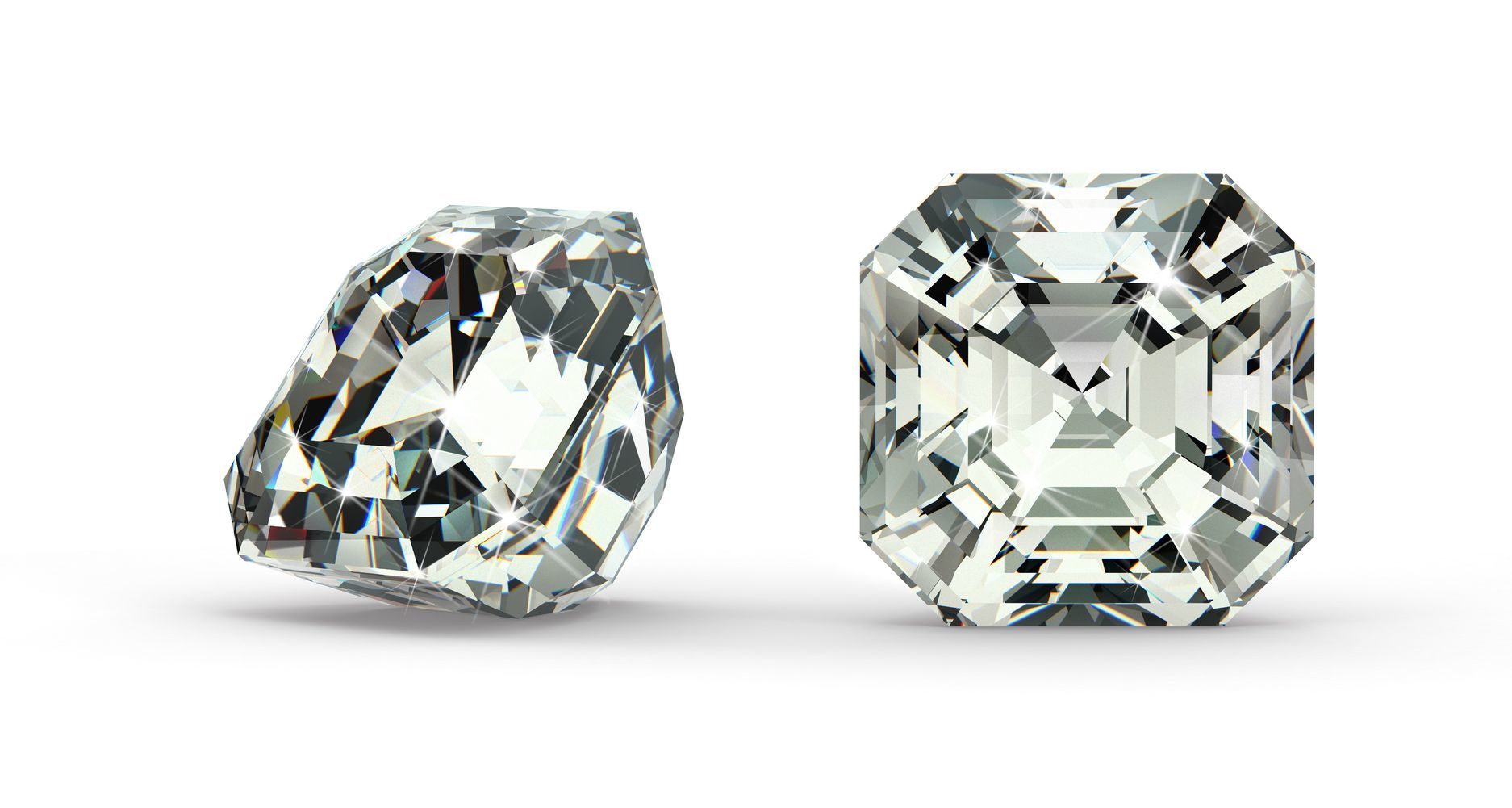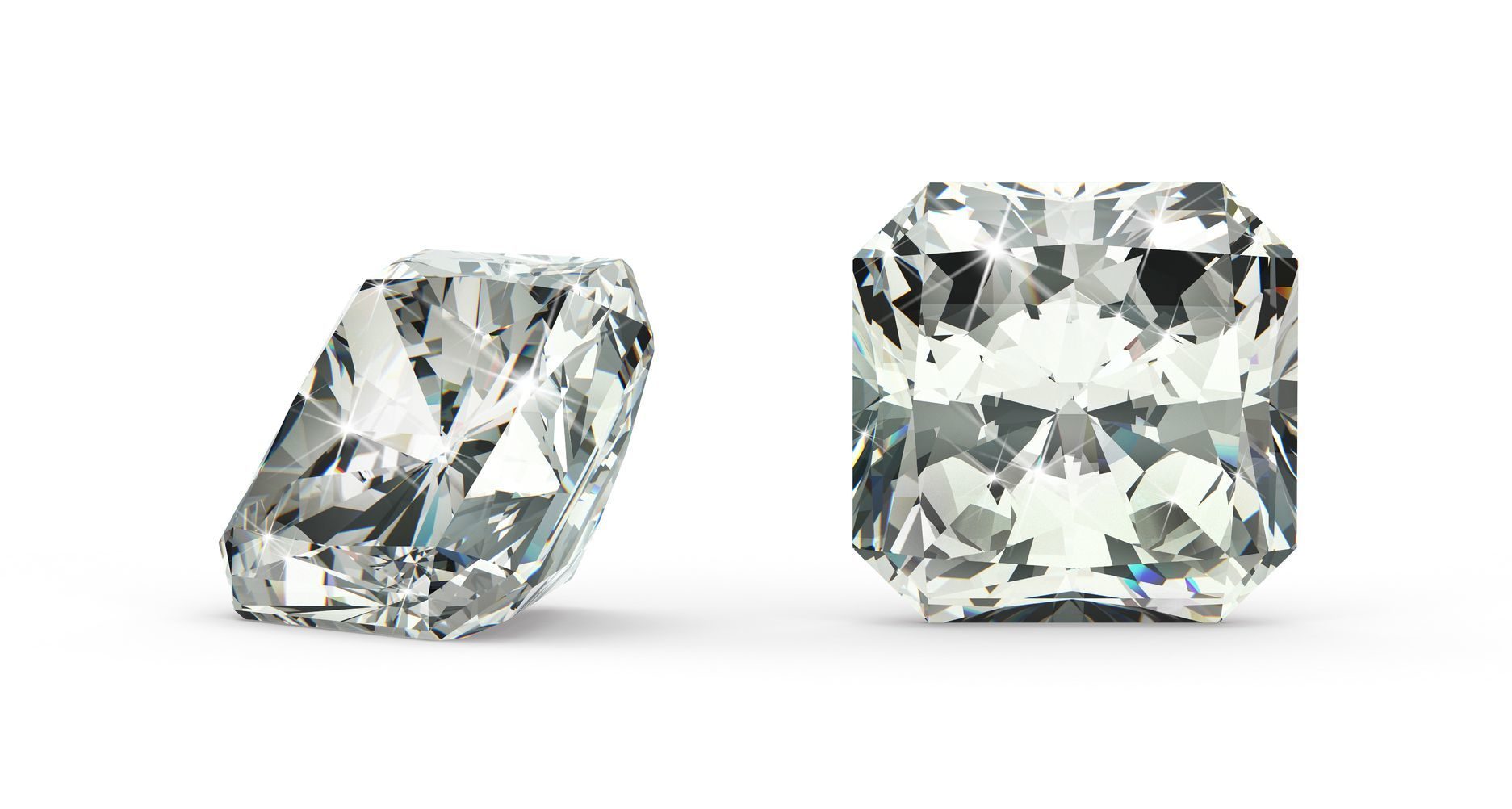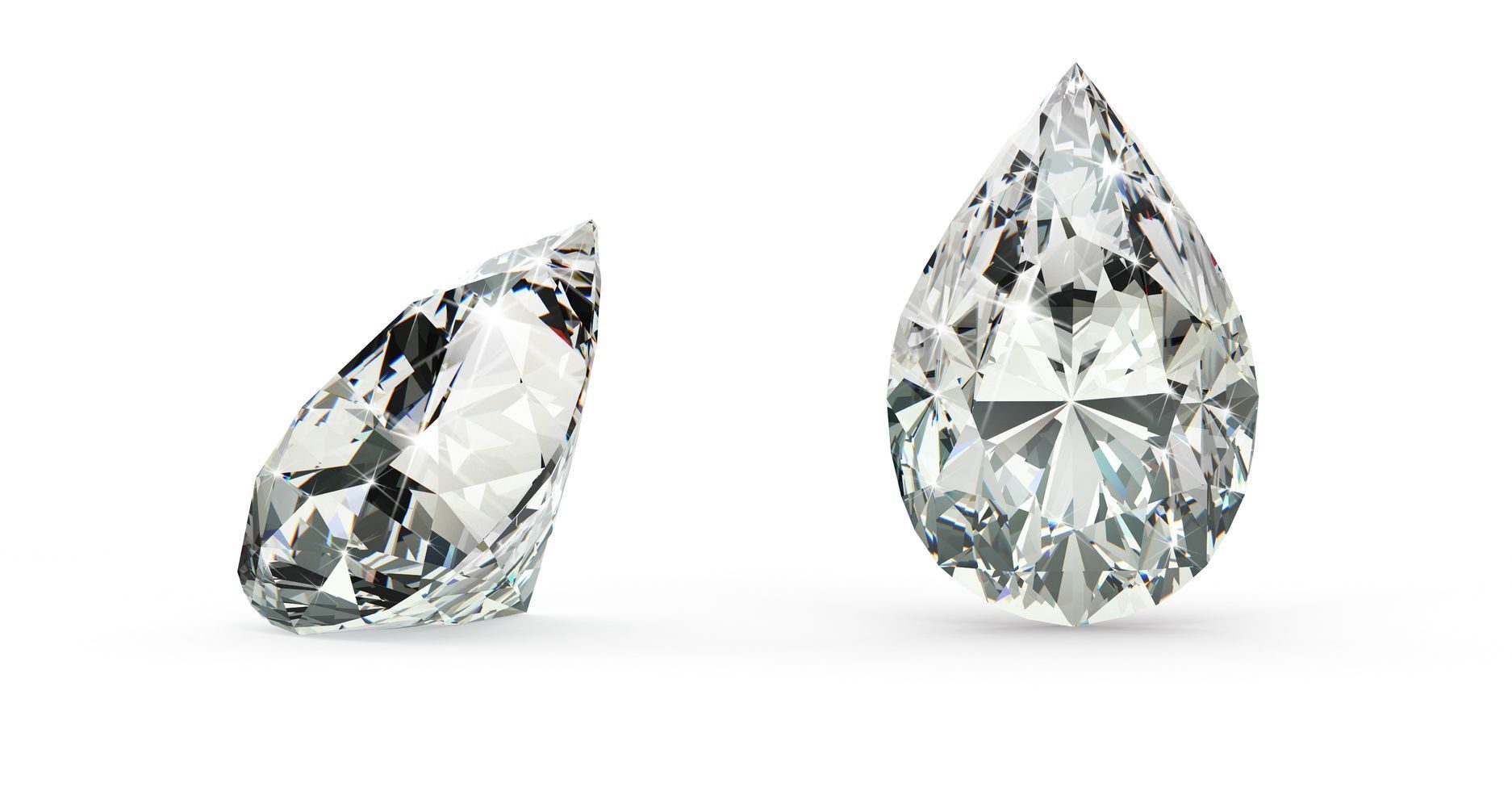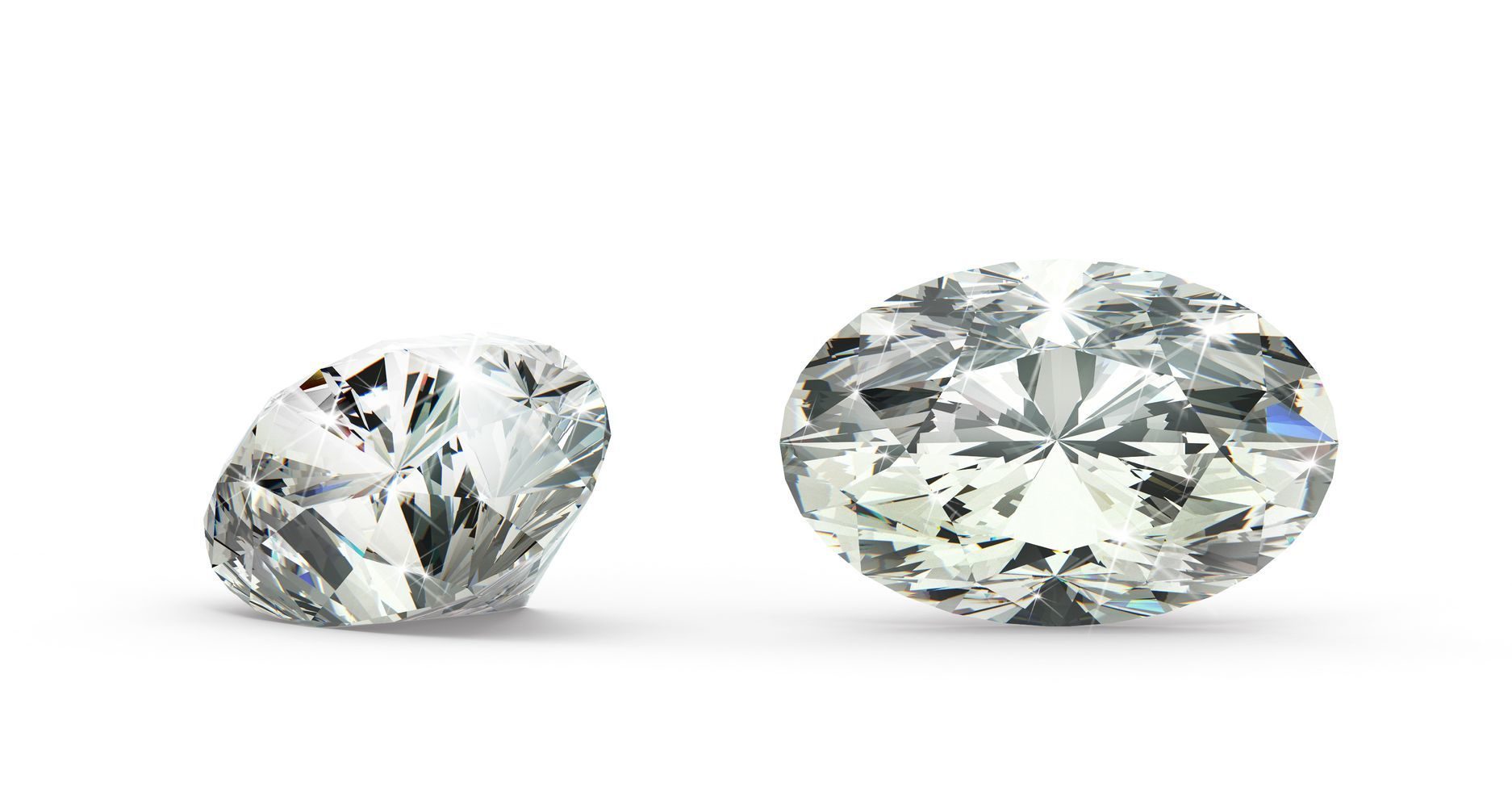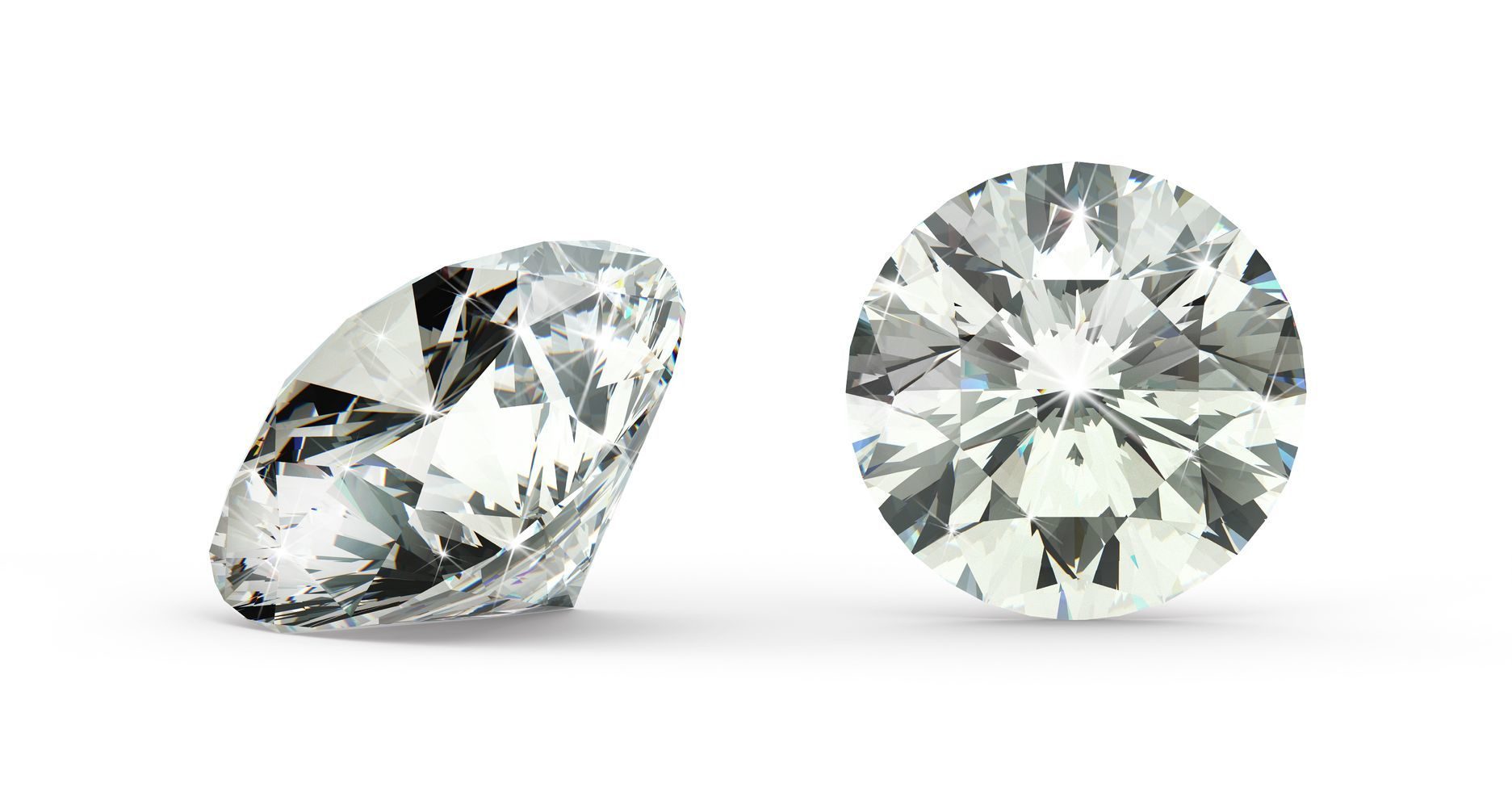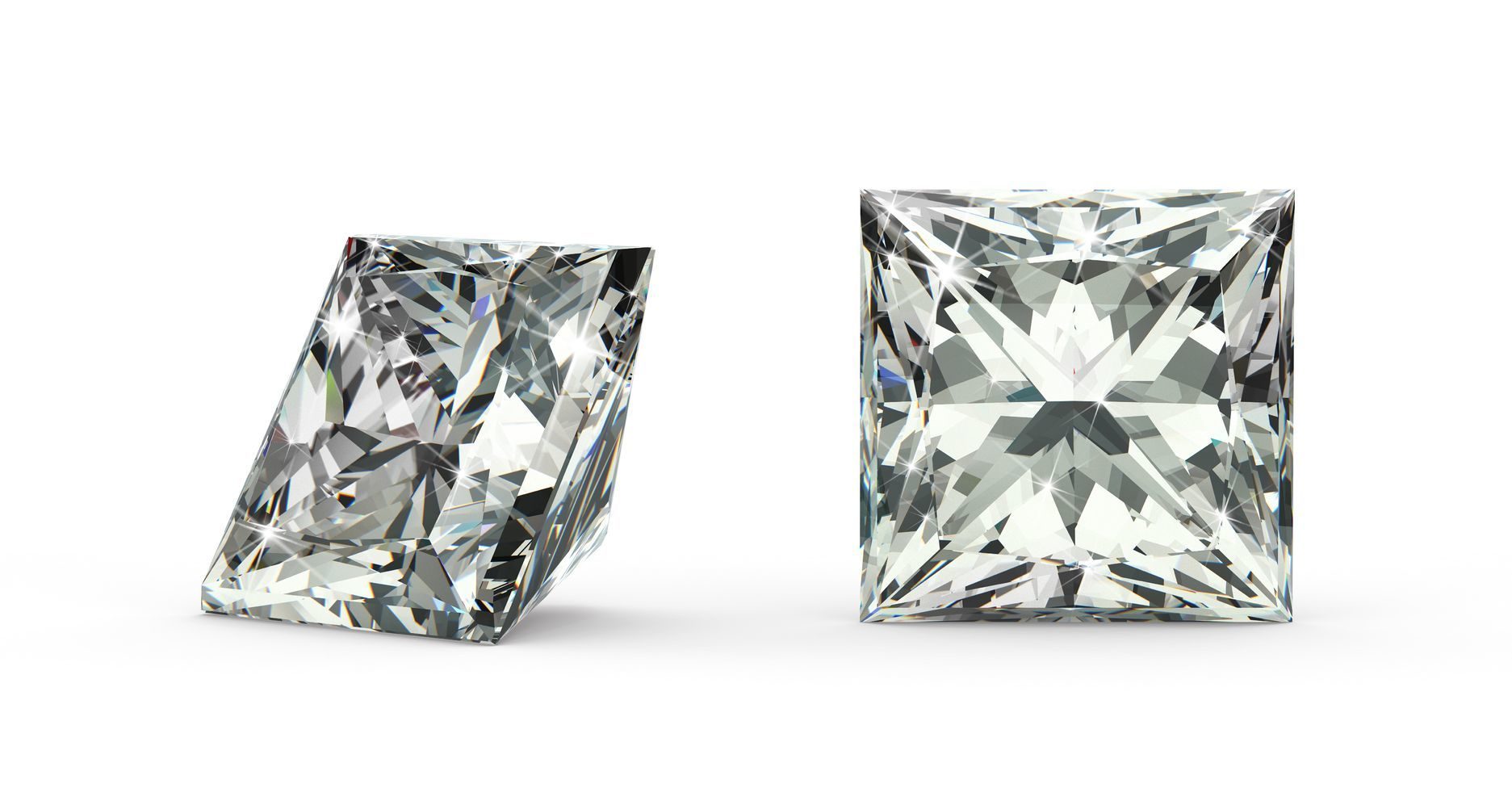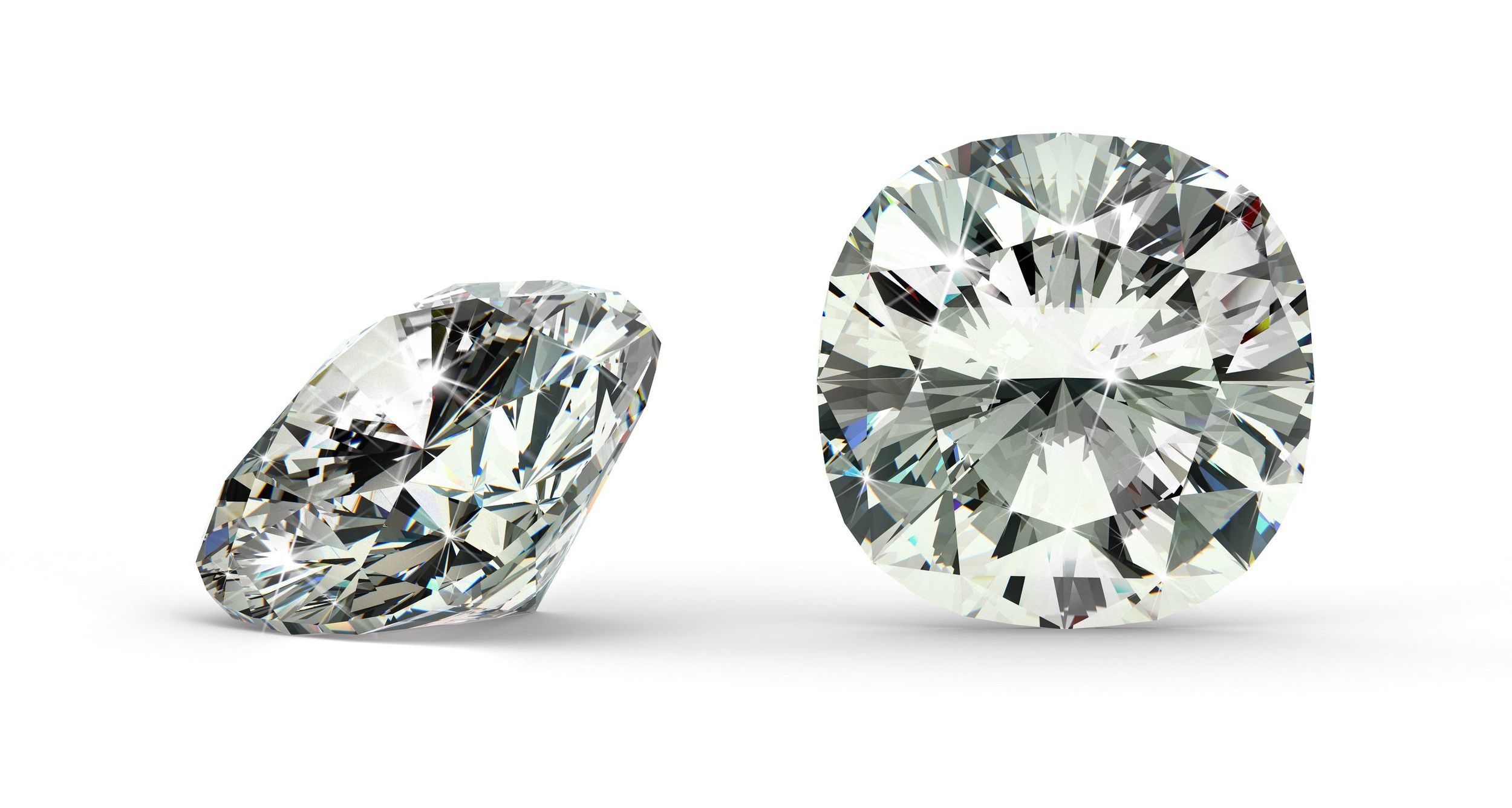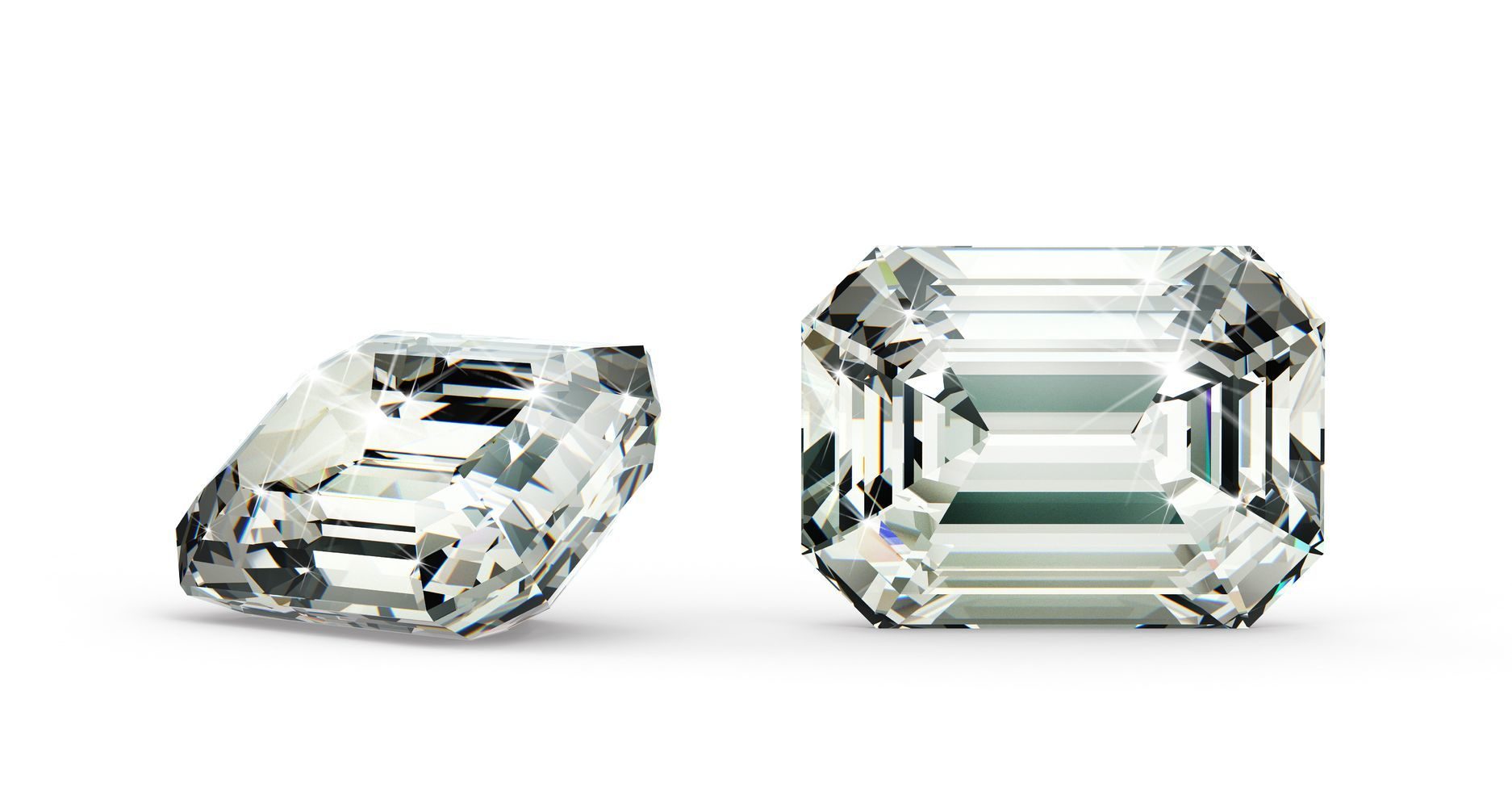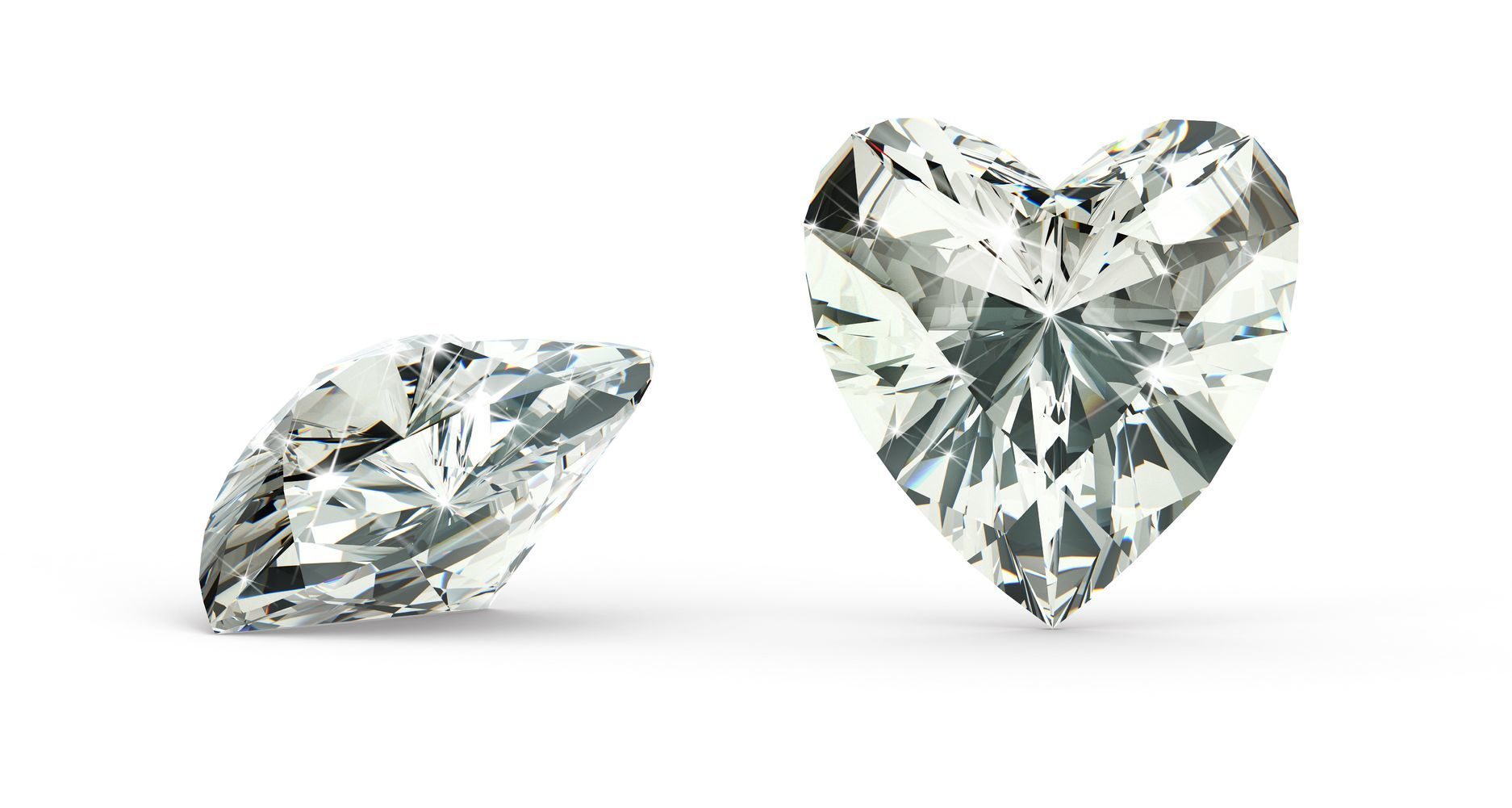Emerald Cut
As the name suggests, this shape was originally introduced for cutting emeralds. This style of faceting reduced the strain put on the emerald, preventing it from chipping and breaking. Diamond cutters noticed this style and incorporated it into diamonds.
Emerald cut stones have a rectangular outline with truncated corners. The 50-58 facets are aligned in a linear pattern that resembles stairs. This form of cut is called a step cut. It typically produces less fire and brilliance than brilliant cut gems, but the dark and light shades display shine and lustre in the form of flashes of light, rather than sparkle. Due to its larger and open table along with its absence of multi-facets, the clarity of an emerald cut is very important. Unlike brilliant cut stones, the emerald cut is less forgiving and may display inclusions and blemishes more readily.
Although it is one of the oldest shapes found in ancient ornaments, the emerald cut’s rise in popularity began with the art deco movement in the 1920s and 1930s, when its clean lines and symmetry were widely admired. Since then, emerald cuts have remained a popular choice for engagement rings, earrings, and other pieces of jewellery. They are very popular when paired with side stones (in the form of baguettes and tapered baguettes) to form trilogy rings.
At Kalfin Jewellery, we only use emerald cut diamonds which abide to our strict selection criteria. For more detailed expert advice and guidance in exploring your choices, we welcome you to arrange an obligation-free consultation at our Collins Street boutique in the Melbourne CBD.
Visit our Melbourne Studio
The region became culturally distinguishable from the Lowlands from the later Middle Ages into the modern period.

